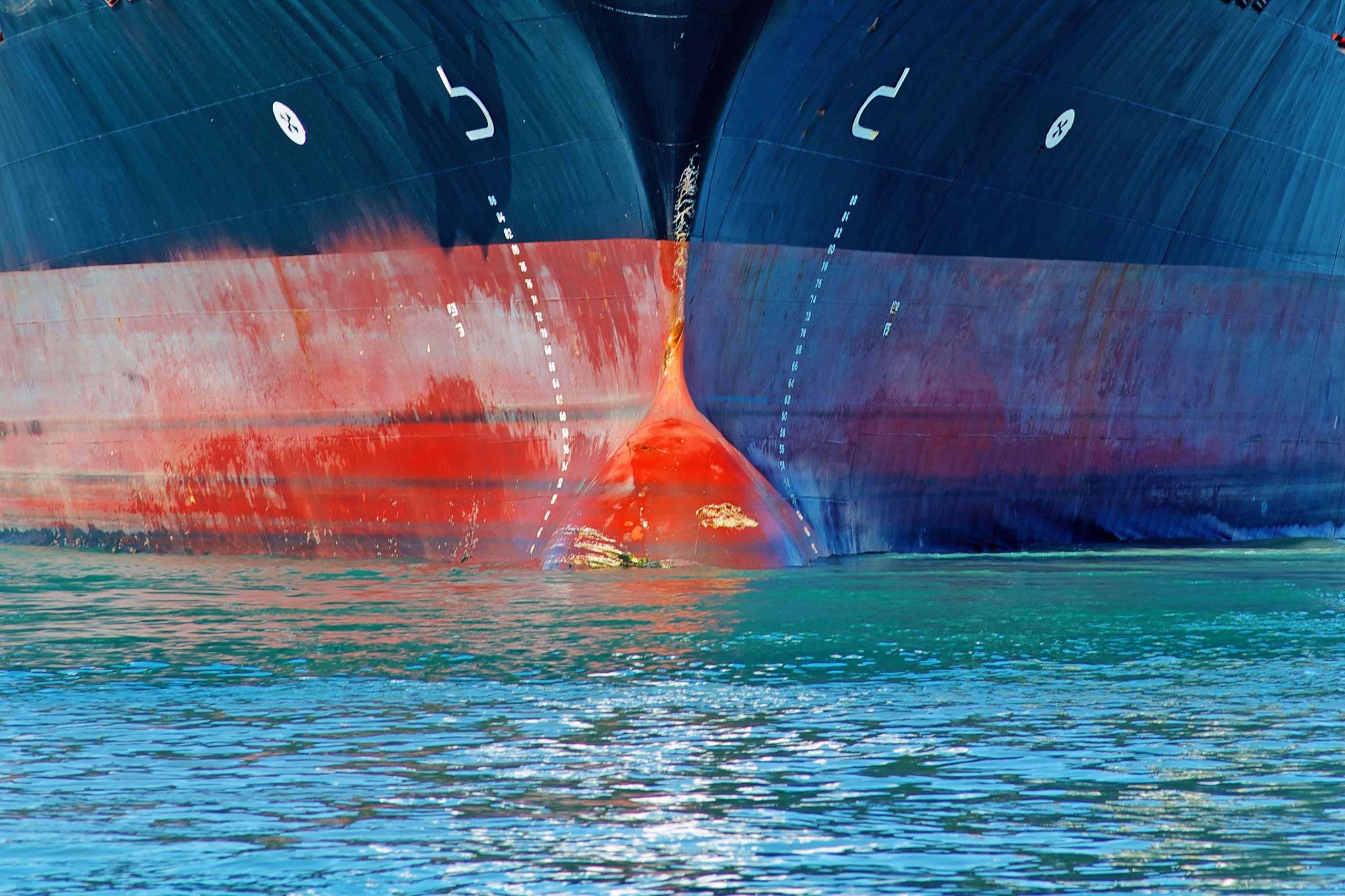Taken from the latest edition of Hellas Hilights, Senior Claims Executives Christos Aporellis and Alec Kyrle-Pope examine whether vessels should apply their respective Vessel Experience Factor when assessing how much cargo has been transferred & received in ship to ship transfer to avoid cargo claims.
In various tanker trades, both dirty and clean, it is commonplace for vessels to load and discharge cargo via Ship-to-Ship (STS) transfer. These types of arrangements are nothing new to Owners, crews or vessel operators and whether by virtue of express charter party provisions or in accordance with best practice industry guidelines, the mechanics of such operations are often clearly defined and understood by all parties.
However, there is one aspect of STS cargo transfers is not so clear-cut; should either or both vessels apply their respective Vessel Experience Factor (VEF) when assessing how much cargo has been transferred and received between the two?
Quantity & Condition
Just as with many other segments of the shipping industry, in the oil trade, cargo claims can often be divided into two broad categories; those relating to quantity of cargo as delivered and those concerned with the condition of the cargo as received.
In the main, cargo shortage claims on outturn tend to be the greatest source of issue but many of these, if not the vast majority, can frequently be explained because of a "paper" loss rather than an actual physical disappearance of product.
This is not to say that oil cargoes, particularly unrefined crude, do not change volume (due to temperature) or emit gases on route nor are they any less susceptible to factors such as "clingage" or unpumpable Remain On Board (ROB), but the point remains that most major inconsistencies arise due to errors in cargo accounting.
Whilst the carrier may be exposed to the risk of cargo loss during (i) loading, (ii) transit, (iii) discharge, and (iv) subsequently (OBQ/ROB losses) it would seem self-evident it is at loading and when the vessel receives her intended cargo that any margin for error remains within the carrier's control. This is where careful measurement becomes key.
Pump up the volume
The movement of oil and its products is best understood and measured in terms of standard volume rather than weight. Assuming there is no impediment to the assessment of a standard volume (with reference to a prescribed temperature), one then has to ascertain the cargo's actual volume, as transferred, by reference to the volume of the spaces it has been moved to and from.
Typically, this is done by ullaging the headspace in the tanks and consulting the relevant calibration tables to determine the actual volume of those tanks the cargo now occupies, commonly referred to as the Total Observed Volume (TOV).
Assuming this process is performed accurately (e.g. consistent datum points, allowances for vessel's list and trim, repeat measurements in poor sea conditions) and once a standard volume metric has been applied , then it should become apparent how much cargo resides in the cargo spaces in question.
The movement of oil and its products is best understood and measured in terms of standard volume rather than weight.
The Vessel Experience Factor
This is where a Vessel Experience Factor comes into play.
For any given vessel a ratio can be established between the quantity of liquid bulk cargo measured onboard the vessel and the corresponding measurement reported ashore, typically, by a loading facility or terminal.
This ratio, called a Vessel Experience Factor (VEF), is an empirical data stream of shore-to-ship cargo quantity differences collated from previous voyages, and is used as a loss control tool to assess the validity of quantities derived from external sources. It is as such both a means by which to correct any calibration error and a method to verify cargo quantities established onboard the vessel compared to what has been declared ashore.
For each voyage, a Vessel Load Ratio (VLR) and Vessel Discharge Ratio (VDR) can be calculated. The VLR or VDR is the quantity received or discharged as measured on the vessel (TCV - OBQ or ROB) divided by the Bill of Lading (shore figure declared at loading) or Outturn Quantity (received on completion of discharge) respectively. The means of the qualifying VLRs or the VDRs over several voyages is called the VEF.
The calculation of an accurate VEF is however, thwarted by various factors. Just as with ullaging, errors in measurement can creep in (the true extent of any contemporary or undetected clingage or ROB for instance) but the greatest pitfall often lies in the means of comparison employed.
Due to the possibility of cargo residues in both shore and vessel's cargo lines, as well as the usual opacity in shore tank figures following discharge, determining an accurate VDR from a vessel's discharging operations is often a problematic affair.
This is not to say it should not be attempted or used as a reference point in instances where, for example, shore facilities are unsuitable or unreliable for determining final cargo outturn figures. However, in terms of developing a historical constant, it is not impervious to error or external manipulation.
As a rule of thumb, it is preferable to collect data from vessel loadings where calibrated shore tanks and shipper's declared figures can be readily obtained and assessed side-by-side with actual volumes of cargo received and observed onboard the vessel. This method also reduces both the danger of cargo being lost or going unaccounted for in shore lines as well as any attempt at obvious fraud.
Whilst there are criteria for identifying those voyages that should qualify for data collection, there is no guarantee that any such voyage will lead onto another.
Generally, the definition of a qualifying voyage is one that meets the following criteria:
I) Includes any voyage that is within a margin of +/- 0.0030 of the average ratio of all voyages listed.
II) Excludes any voyages where calculated ratio suggests significant error.
III) Excludes the maiden voyage, and any voyages prior to any structural modifications affecting vessel's cargo tank capacities.
IV) Excludes any load or discharge data where shore measurements are unavailable.
V) Excludes the first voyage after a dry docking. (N.B. not necessarily applicable in clean products trade.)
VI) Excludes any voyages after the carriage of non-liquid cargoes.
But how does this apply to STS operations and should a vessel's VEF be applied in determining the quantities of cargo being transferred?
Ship-to-ship loading operations create a number of issues when it comes to accurately quantifying cargo transfers.
The first and most obvious is neither party can agree with any absolute certainty how much cargo precisely has moved between them, where both may be applying their own VEFs and will likely have a vested interest in their figures being given the greater credence.
In effect it is one party's word against the other and where the STS marks the transfer of risk for the cargo under the underlying sale contract, it takes little to imagine how potentially lucrative such a battleground might prove to be.
A pertinent example might be where a cargo is sold Delivered Ex Ship (DES) offshore Lome and the seller is the charterer of the mother vessel whereas the local buyer is the charterer of the daughter, and receiving, vessel.
Further complications might also arise where, at least on the part of the mother vessel, a part discharge is being performed. In such a scenario the discharging vessel's VEF cannot be relied upon or trusted as the VEF is only relevant in the context of full cargo transfers.
The impact of weather and sea conditions also impedes transparent measurement. This is particularly true where the influence of such factors has a greater bearing on one vessel more than the other.
Consider a fully laden Suezmax discharging a cargo parcel to a 11,000 DWT product tanker. Here, where one cargo is less static than the other, practical solutions need to be identified and agreed between the parties to cater for any disparity.
Furthermore, where a vessel consistently loads via STS, in circumstances where no definitive shore-type calibrated figure is ever available, how or even if these loadings should be recorded or qualify for data entry into any VEF assessment is yet another concern.
What is the solution?
Developed properly, with emphasis on calibration and measurement procedures, a VEF can certainly provide a factor for enhancement of accuracy of volume determinations onboard vessels and as such be the first line of defence in protecting a carrier from spurious paper shortage claims.
In the context of STS transfers, as a receiving vessel from a larger mother vessel or FPSO, and despite the obvious difficulties set out above, it would make sense to apply such a correction method wherever possible. This is particularly true in the Clean Petroleum Products (CPP) trades where issues such as clingage are uncommon and older data therefore more consistent.
Recognising and understanding the flaws in how the discharging or lightering vessel might be applying their own VEF is also of valuable assistance and a means by which another vessel might challenge or more clearly examine the figures being presented to her.
How and where vessels engaged in consistent loading activities via STS collect reliable data is an issue open to debate.
What is clear however, is that where possible and within reason, a vessel should always consult her VEF to verify what others are telling her.




